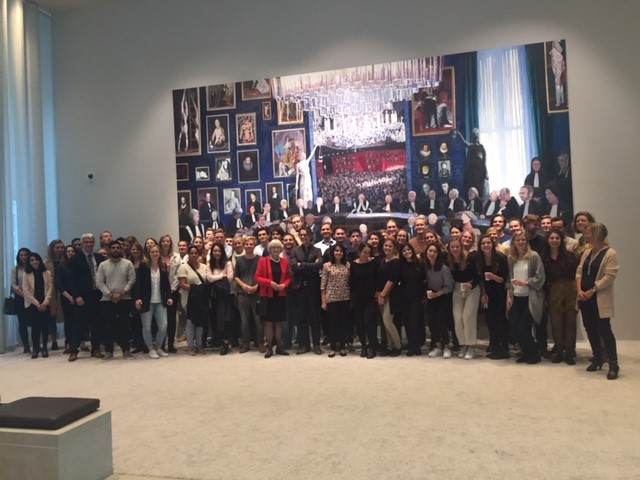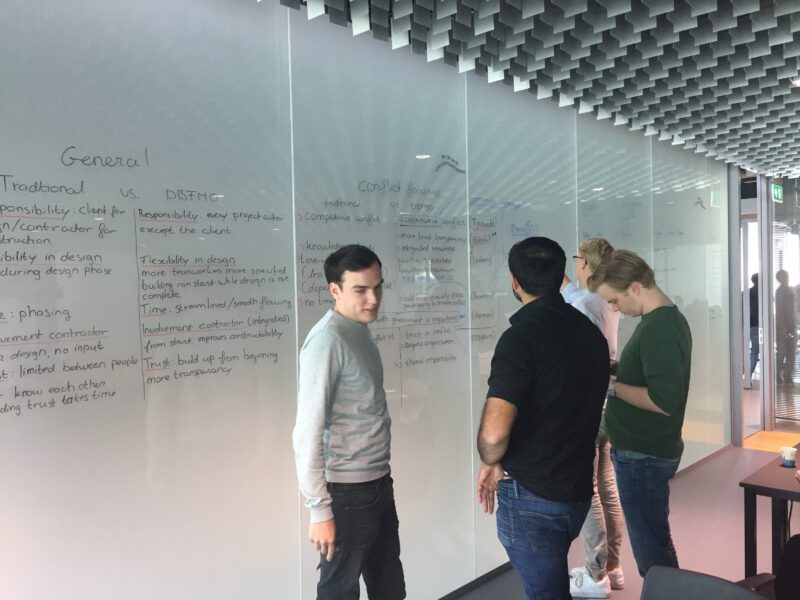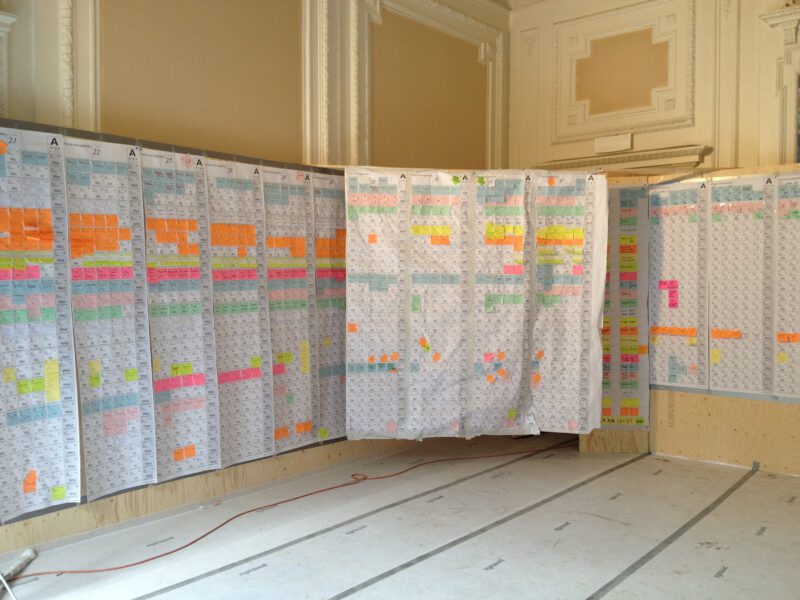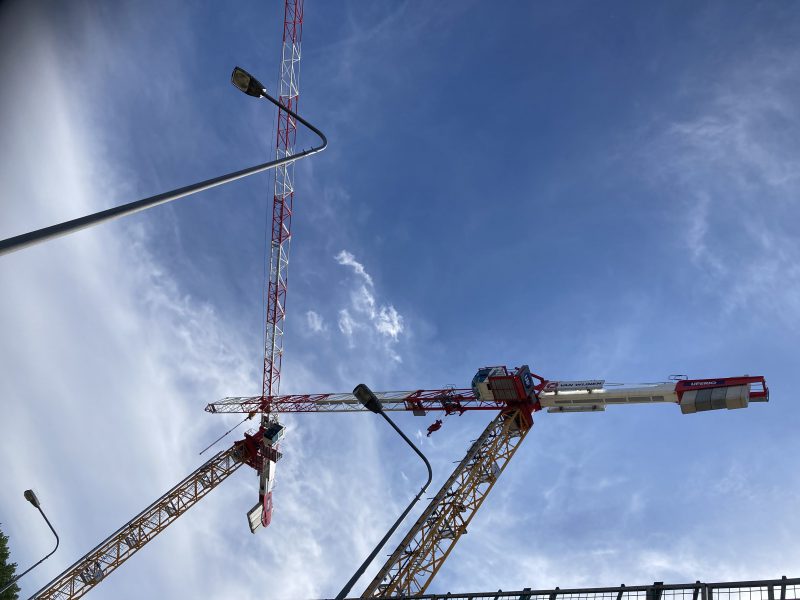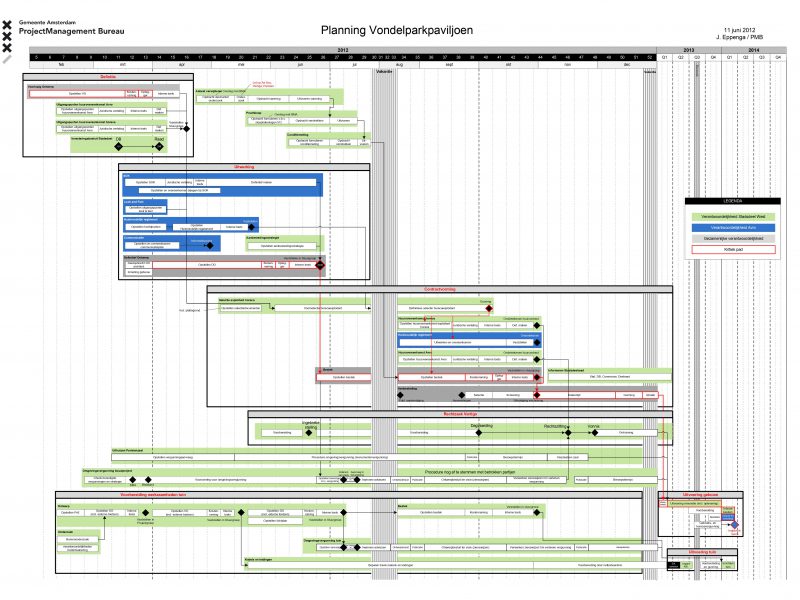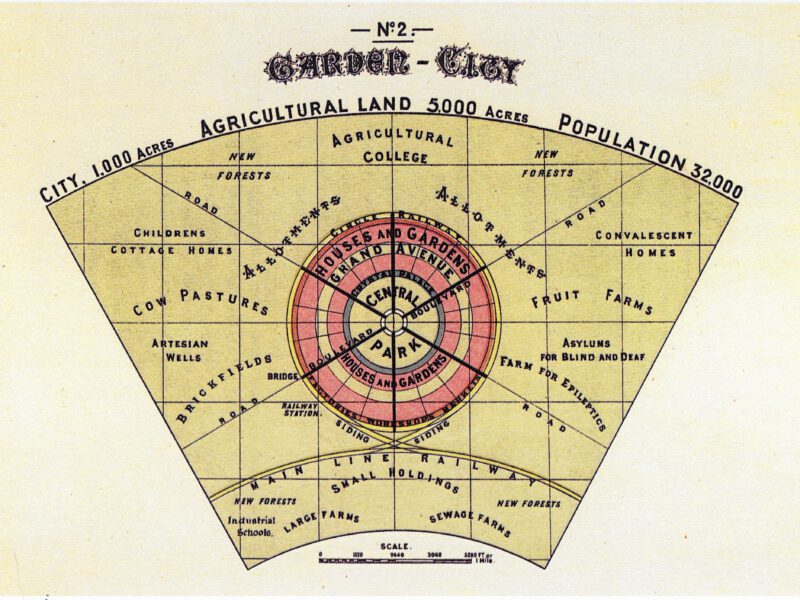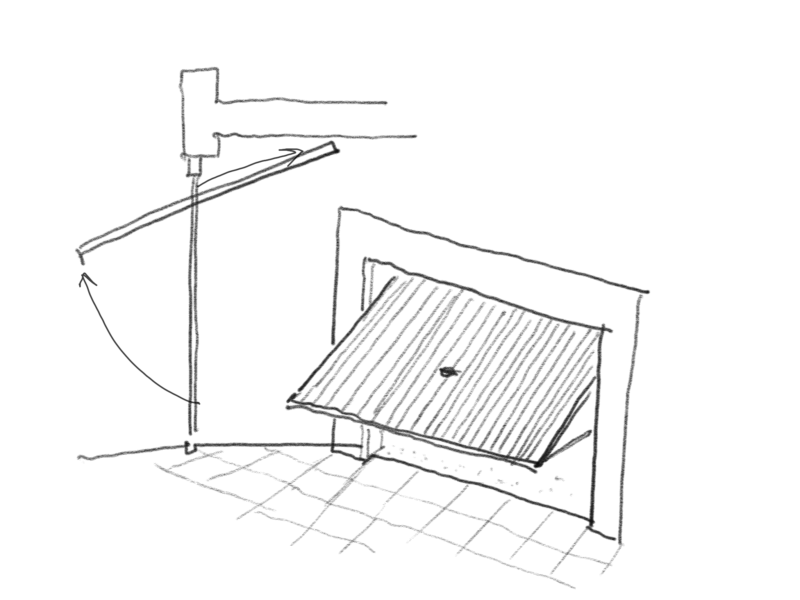Some years ago I had the privilege to visit the new building of the Dutch Supreme Court in the Hague. We used the building as a case for the DCM course. It is a great modern building and the representation of the building is an important feature.
During the course, we discussed the involvement of key stakeholders. For instance the involvement of the client, employees, users, and visitors. We also discussed how to deal with subjective issues like ambiance, societal values, architectural values, and intrinsic values. The building of the Supreme Court, is not, in the first place, about the square meters, about indoor air quality. Maybe the main importance of the building is its representation, it’s symbolic quality. The meaning in our democratic society. The courts as the highest legal representation of the of the democratic system.
I think this is best explained through the huge painting by Helen Verhoeven in the entrance hall that was part of the project.
The huge painting in the hall measures 4.0 x 6.5 meters and it took the artist more than two years to finish it. The painting is already called the New Nachtwacht. And it fits in a long tradition of group portraits in European and Dutch painting history. But it also refers to the long tradition of the Dutch judicial system. It is an iconographic painting like, we know from Gothic and Renaissance times. All statues and paintings in Gothic cathedrals have iconographic meanings. Attributes are used to make clear who or what is meant. Standing before the painting you can recognize several images that relate to Dutch history, the bible, former kings, governors, judges, philosophers, painters, and so on. I see Baruch Spinoza, Hugo de Groot, and Lady Justice with her attributes: the balance, the blindfold, and the sword. I recognize Judith with the head of Holofernes from the Old Testament.
What is this painting about? About the objective and about the subjective. About justice and injustice. The whole represents the essence of what the Supreme Court is for the nation: the members of the court in the center guarding, protecting and representing the citizens through law. The citizens are in the back. I was impressed and amazed by the painting.
Why put so much effort into this painting?
The essence is representation. This painting represents the Supreme Court and its importance to our country. The painting represents the meaning of the client; the Supreme Court. The painting gives meaning to the court, and to the importance of the building as a whole because it represents communal justice and its meaning for Dutch democracy. This meaning is stressed by the judge in the center. This is Lodewijk Ernst Visser; the Jewish president of the supreme court, unlawfully fired by the Nazis during World War II. And shamefully without his colleagues protesting against his removal. It is, according to the Painter, to show to all judges to be constantly critical and to always stand in front of the law. Only then do they have a thru meaning for society.
As you experienced during our course, the management of buildings is only partly about systems, numbers, profit, or checklists. Management of construction is maybe more about sense, meaning, value, teamwork, personal skills, integrity, representation, and their meaning for society. Especially if you work for a public client. The image of the painting helps us to understand that all actions and decisions during design and construction depend on the narrative behind it, the mission. In the case of the Supreme Court, it is the meaning for our democratic society. The building, like the painting, is the representation of it.
